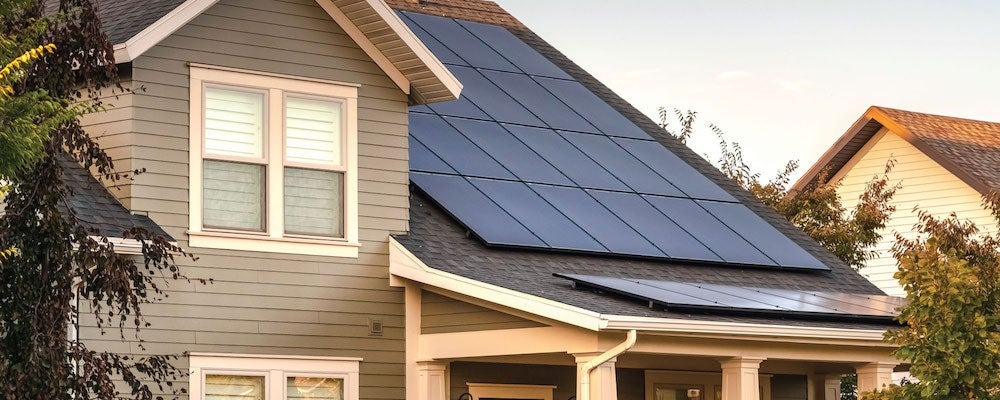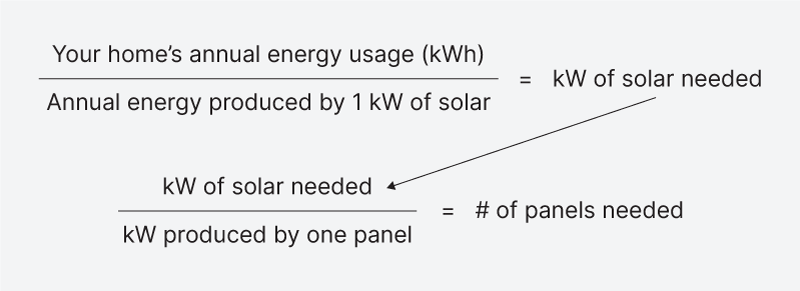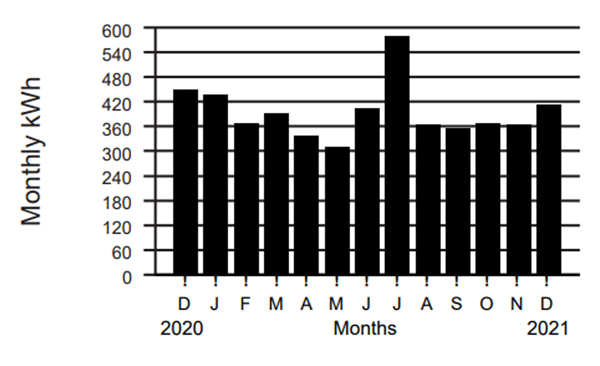Updated 11 months ago
How many solar panels are needed for a 2,000-square-foot home?
Written by
Ben Zientara

Find out how many solar panels you need
One of the first questions a homeowner who is interested in solar might ask is “how many solar panels do I need?” Oftentimes, people wonder if they need a certain number of panels based on the size of their home.
The average home in the United States is around 2,500 square feet, and needs between 15 and 19 solar panels, but the square footage of your home is not the primary factor in determining how many solar panels you need.
Instead, the most important factor is your annual energy usage – and that can vary widely depending on where you live, how many people live in your home, and whether you cook, heat your home, and heat your water with electricity or fossil fuels like natural gas and oil.
Think about it like this: two elderly grandparents who live in a house with a gas furnace, stove, and water heater have very little need for electricity. Conversely, a family of four with two adults and two teenagers, living in a home with all electric appliances would use a ton of electricity. Same sized house, different energy consumption.
If you want to calculate the number of solar panels your home needs, the easiest way is to use the SolarReviews solar panel calculator. You could also do the calculations yourself, and we'll show you how, but first let's look at some averages to get a baseline.
Key takeaways
-
The square footage of your home is not the primary factor in determining how many solar panels you need.
-
16 to 21 solar panels are needed to make the average amount of energy used by a typical U.S. home.
-
The number of solar panels you need is determined by your annual energy usage, your location, and the direction of your roof.
-
The SolarReviews solar panel calculator is the easiest way to get a quick estimate of how many solar panels you need, along with information about cost, savings, and incentives.
Average number of solar panels for a 2,000-square-foot home
To make the average amount of energy used by a home in America, a 2,000 sq. ft. home would need between 16 and 21 solar panels. That's assuming the home has a good south-facing roof that gets a full amount of sunlight every day.
Here's how we got that number: by dividing the annual energy usage of the average home by the average amount of energy that one kilowatt of solar panels can make in a year, then dividing that result by the number of kilowatts a single solar panel is rated to produce under full sun. We ran that calculation for the sunniest and least sunny states (Arizona and Michigan) to get the range of 16 to 21 solar panels.

More details about how many panels a 2,000-square foot home needs
The average U.S. house is actually a little more than 2,000 square feet, and its occupants use around 10,800 kilowatt-hours per year. Of course, this number differs depending on the type of home (apartment vs single family, for example) and which state the home is in, but we're talking averages here.
The state where you live determines how effective solar panels are. On the high end, one kilowatt (kW) of solar panels in Arizona makes around 1,900 kWh in a year. On the low end, the same 1 kW of solar panels only makes 1,400 kWh in Michigan. That's a 7.7 kW solar installation needed to make 10,800 kWh of solar energy in Michigan (10,800 divided by 1,400) vs. 5.7 kW of solar needed in Arizona (10,800 divided by 1,900).
Considering that the average solar panel from companies like Qcells and Silfab is now around 400 watts, you can divide the kilowatts of solar needed by 0.40 and round it up to get the final number. Keep in mind this is just a rough estimate and it doesn't account for homes that use more or less than 10,800 kWh of electricity per year.
If you want a much better idea of how many solar panels you need, check out our solar panel calculator.
Average cost of a solar installation for a 2,000-square-foot home
In 2025, the average cost of installing solar panels on a 2,000-square-foot home is between $17,271 and $23,331 before the solar tax credit or other solar incentives are applied. This works out to $3.03 per watt of solar installed, which is the average cost of a solar installation in the U.S.
How to figure out how much solar you need
By considering your annual electricity usage, the location of your home, and the direction your roof faces, it's pretty easy to determine how many solar panels you'll need. We have an article that walks you through all the steps to calculate your solar needs.
To see how much energy your home uses, you can look at your utility bills, which at the very least should have the number of kilowatt-hours you used in the previous month, and may even have a chart of your past year's usage that looks like this:

A chart of annual usage on a monthly electric bill
Factors that affect solar system size
As we covered above, the average home will need between 16 and 21 370-watt solar panels to make the average amount of energy used by a home in the United States. But many factors affect energy usage, including the need for air conditioning and the type of fuel used for heating.
Like the example above, a home with a gas furnace, stove, and water heater has very low electrical energy needs, while a home with all electric appliances needs a much larger amount of electricity.
In addition, the needs of a typical grid-tied home solar installation differ from those of an off-grid solar power system. People looking to go off-grid need to oversize their solar array to produce as much electricity as they would use during the darkest days of winter, and will also need to add a solar battery to store excess energy for later use.
Bottom line
To recap: you can’t tell how many solar panels you need based on the size of your home. Instead, you can estimate your solar needs by looking at your usage and determining how much electricity each solar panel can make over the course of a year. Every home is different, and the factors that determine your needs include the kind of appliances you have, your location, and the design of your roof.
Ben Zientara is a writer, researcher, and solar policy analyst who has written about the residential solar industry, the electric grid, and state utility policy since 2013. His early work included leading the team that produced the annual State Solar Power Rankings Report for the Solar Power Rocks website from 2015 to 2020. The rankings were utilized and referenced by a diverse mix of policymakers, advocacy groups, and media including The Center...
Learn more about Ben Zientara